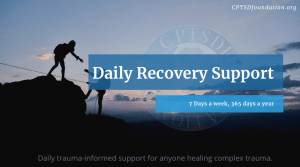Alcohol use disorder, which includes alcoholism, is a pattern of behavior where the person cannot control their drinking and is preoccupied with drinking even when it causes them problems. For many alcoholics, what starts as having a few drinks for reasons that are not fully understood balloons into an out-of-control compellation to drink more and more to get the same effect.
This article will focus on alcoholism, its causes, including genetic links that cause a person to be more susceptible to forming it.
A Closer Look at Normal vs. Abnormal Alcohol Intake
There are people who can drink alcohol and have no adverse reactions to it. Perhaps they drink a glass of wine at dinner or have liquor at a wedding; these are events where alcohol use is considered “normal,” for lack of a better word. Drinking alcohol in moderation is not harmful to a healthy adult. Moderate drinking means that adults consume two or fewer drinks in a day for men and one or less in a day for women.
In the United States, a drink contains 0.6 ounces of pure alcohol and can be generally found in:
- 12-ounces of beer (5% alcohol content).
- 8-ounces of malt liquor (7% alcohol content).
- 5-ounces of wine (12% alcohol content).
- 5-ounces of 80-proof (40% alcohol content) distilled spirits or liquor (e.g., gin, rum, vodka, whiskey).
Anything above these limits can cause damage to the liver and central nervous system.
Some people should never drink alcohol, including pregnant or nursing women, people under the legal age for their state, people who are on some prescription and over-the-counter drugs, living with certain medical conditions, and recovering from alcohol abuse disorder.
Excessive drinking includes binge drinking, heavy drinking, and drinking by people who should not consume alcohol, as listed above. Binge drinking is the most common form of excessive drinking and includes women drinking four or more drinks on a specific occasion or men consuming five or more drinks on certain occasions.
Heavy drinking is defined as drinking eight drinks or more per week for women and fifteen or more drinks for men per week. Most people who drink excessively are not considered alcoholics; however, they are in great danger of becoming one.
Alcohol Abuse Disorder

Alcoholism, like many other addiction problems, can be mild, moderate, or severe, and the difference is the number of symptoms that are experienced. Some of the symptoms of alcohol use disorder are listed below:
- Wishing to limit how much is drank or making unsuccessful attempts to do so
- Spending a significant amount of time obtaining alcohol, drinking, and recovering from alcohol use
- Being incapable of limiting the amount of alcohol you drink
- Feeling cravings for alcohol or a strong urge to drink
- Failing to fulfill obligations to family and work
- Giving up on or reducing work activities and hobbies
- Continuing to drink even though it is causing social, interpersonal, or physical problems
- Developing a tolerance to alcohol, so you need more to feel tipsy or drunk
- Using alcohol while driving or other unsafe situations
- Experiencing withdrawal when alcohol is not available
- Drinking to avoid withdrawal
Not every person who has alcohol use disorder often includes periods of intoxication followed by symptoms of withdrawal. However, if you are exhibiting any of the symptoms listed above, please, seek help.
The Dangers of Alcoholism to the Alcoholic

The Centers for Disease Control (CDC) in the United States has a ton of information about alcoholism and its effects on the human body and the person’s personal safety, and the safety of others.
Alcohol depresses the central nervous system, with the initial reaction being stimulation followed by sedation. Drinking too much affects one’s speech, muscle coordination, and some vital centers in the brain. Too much alcohol drank in a binge can cause a life-threatening coma or even death, especially when mixed with some prescription drugs you have been taking.
According to the CDC, excessive drinking reduces a person’s judgment and lowers their inhibitions leading to poor choices and dangerous situations. They listed many of these dangers, and I quote them below.
- Motor vehicle accidents and other types of accidental injury, such as drowning
- Relationship problems
- Poor performance at work or school
- Increased likelihood of committing violent crimes or being the victim of a crime
- Legal problems or problems with employment or finances
- Problems with other substance use
- Engaging in risky, unprotected sex, or experiencing sexual abuse or date rape
- Increased risk of attempted or completed suicide
There are many physical impacts that are caused by drinking too much alcohol on a single occasion or over time that, according to the CDC, include the following:
Liver disease. Heavy drinking can cause increased fat in the liver (hepatic steatosis), inflammation of the liver (alcoholic hepatitis), and over time, irreversible destruction and scarring of liver tissue (cirrhosis).
Digestive problems. Heavy drinking can result in inflammation of the stomach lining (gastritis) and stomach and esophageal ulcers. It can also interfere with the absorption of B vitamins and other nutrients. Heavy drinking can damage your pancreas or lead to inflammation of the pancreas (pancreatitis).
Heart problems. Excessive drinking can lead to high blood pressure and increases your risk of an enlarged heart, heart failure, or stroke. Even a single binge can cause a severe heart arrhythmia called atrial fibrillation.
Diabetes complications. Alcohol interferes with the release of glucose from your liver and can increase the risk of low blood sugar (hypoglycemia). This is dangerous if you have diabetes and are already taking insulin to lower your blood sugar level.
Sexual function and menstruation issues. Excessive drinking can cause erectile dysfunction in men. In women, it can interrupt menstruation.
Eye problems. Over time, heavy drinking can cause involuntary rapid eye movement (nystagmus) as well as weakness and paralysis of your eye muscles due to a deficiency of vitamin B-1 (thiamin). If not promptly treated, a thiamin deficiency can also be associated with other brain changes, such as irreversible dementia.
Congenital disabilities. Alcohol use during pregnancy may cause miscarriage. It may also cause fetal alcohol syndrome, resulting in giving birth to a child with physical and developmental problems that last a lifetime.
Bone damage. Alcohol may interfere with the production of new bone; this loss can lead to thinning bones (osteoporosis) and an increased risk of fractures. Alcohol can also damage bone marrow, which makes blood cells. This can cause a low platelet count, which may result in bruising and bleeding.
Neurological complications. Excessive drinking can affect your nervous system, causing numbness and pain in your hands and feet, disordered thinking, dementia, and short-term memory loss.
Weakened immune system. Excessive alcohol use can make it harder for your body to resist disease, increasing your risk of various illnesses, especially pneumonia.
Increased risk of cancer. Long-term, excessive alcohol use has been linked to a higher risk of many cancers, including mouth, throat, liver, esophagus, colon, and breast cancers. Even moderate drinking can increase the risk of breast cancer.
Medication and alcohol interactions. Some medications interact with alcohol, increasing its toxic effects. Drinking while taking these medications can either increase or decrease their effectiveness or make them dangerous.
Alcoholism May Be Hereditary

While people drink alcohol for many reasons, research such as that reported in Nature Reviews Gastroenterology & Hepatology show that:
“Abundant evidence indicates that alcoholism is a complex genetic disease, with variations in a large number of genes affecting risk.” (Edenberg & Foroud, 2013)
The research has found specific genes responsible for the metabolism of alcohol, which is affected and can be passed down from parent to child.
There is also evidence to suggest that the secretion and uptake of serotonin, a neurotransmitter that makes us feel good, is also genetically altered, leaving a person with a lowered ability to properly metabolize alcohol (Lovinger, 1997).
Alcohol is genetically linked to the person and leaves them without the ability to fight off the urge to drink.
People who suffer from alcohol abuse disorder are not bad people; they are people with a bad disease. This is an explanation, not an excuse for their behavior.
Children of alcoholic parents grow up with a myriad of problems that would never have formed had their parents not drank.
Drinking alcohol, at least in the beginning, for alcoholics is a choice. However, after they are in full-blown alcohol use disorder, it becomes difficult, if not dangerous, for them to stop cold turkey. They need the assistance of a trained medical staff to avoid them dying from the withdrawal.
Alcoholism is an acute disease that breaks up relationships and leaves children reeling in the behaviors they observe and how they are treated and may grow up to become alcoholics themselves.
It is time to end the demonizing of alcoholics and bring this common problem out of the shadows so their drinking may stop and the terrible effects on their children will end.
“What lies behind us and what lies before us are tiny matters compared to what lies within us.” – Ralph Waldo Emerson
“Don’t let the past steal your present.” – Terri Guillemets
References
Edenberg, H. J., & Foroud, T. (2013). Genetics and alcoholism. Nature Reviews Gastroenterology & Hepatology, 10(8), 487-494.
Lovinger, D. M. (1997). Serotonin’s role in alcohol’s effects on the brain. Alcohol health and research world, 21(2), 114.

CPTSD Foundation Awareness Wristbands

Official CPTSD Foundation wristbands to show the world you support awareness, research, and healing from complex trauma.
The official CPTSD Foundation wristbands were designed by our Executive Director, Athena Moberg, to promote healing and awareness benefits all survivors. We hope you’ll consider purchasing one for yourself and perhaps one for a family member, friend, or other safe people who could help raise awareness for complex trauma research and healing.
Each purchase of $12 helps fund our scholarship program, which provides access to our programs and resources to survivors in need.
https://cptsdfoundation.org/cptsd-awareness-wristband/

If you’ve been wondering how our programs work, now you can try out a free sample to see if they’re right for you. We’d love to have you join us in our safe healing space.
You are always worth healing!

Do you like to color, paint, sew, arts & crafts? How about drawing, model building, or maybe cross stitch? Whatever creative activity you prefer, come and join us in the Weekly Creative Group. Learn more at https://cptsdfoundation.org/weeklycreativegroup
As always, if you or a loved one live in the despair and isolation that comes with complex post-traumatic stress disorder, please, come to us for help. CPTSD Foundation offers a wide range of services, including:
- Daily Calls
- The Healing Book Club
- Support Groups
- Our Blog
- The Trauma-Informed Newsletter
- Daily Encouragement Texts
All our services are reasonably priced, and some are even free. So, to gain more insight into how complex post-traumatic stress disorder is altering your life and how you can overcome it, sign-up; we will be glad to help you. If you cannot afford to pay, go to www.cptsdfoundation.org/scholarship to apply for aid. We only wish to serve you.

My name is Shirley Davis and I am a freelance writer with over 40-years- experience writing short stories and poetry. Living as I do among the corn and bean fields of Illinois (USA), working from home using the Internet has become the best way to communicate with the world. My interests are wide and varied. I love any kind of science and read several research papers per week to satisfy my curiosity. I have earned an Associate Degree in Psychology and enjoy writing books on the subjects that most interest me.





